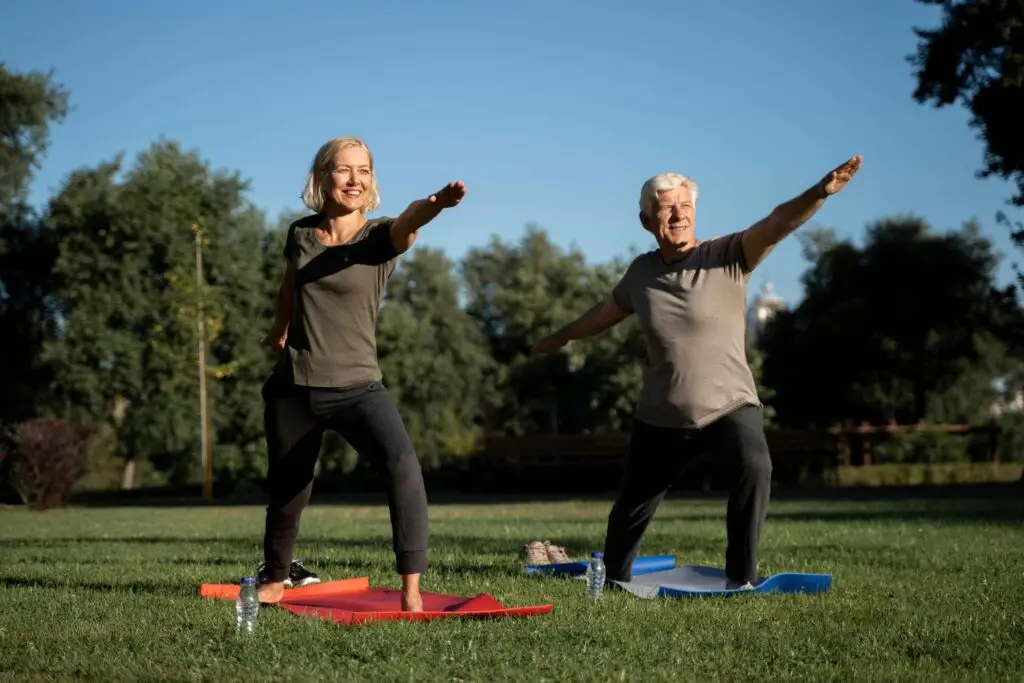How Seniors Can Build a Heart-Healthy Lifestyle
Aging changes the way the heart works, but it does not mean slowing down your life. By the time you reach sixty, your heart has pumped for decades, adapting to stress, activity, and diet. As arteries stiffen and blood pressure shifts, your body needs extra support. This is where a heart-healthy lifestyle makes the biggest difference.
Seniors who focus on building a healthy heart diet and making small lifestyle changes for heart disease prevention can enjoy more energy, better circulation, and longer independence. A heart-healthy lifestyle for seniors combines balanced meals, regular exercise, and simple daily habits that protect the cardiovascular system.
Research shows that adopting a cardiac diet such as the DASH or Mediterranean plan, adding heart-healthy foods for seniors like beans, oats, berries, and fish, and following the American Heart Association diet guidelines all reduce the risk of heart attack and stroke.
The goal is not just to avoid disease. It is to enjoy life with a stronger body, a clearer mind, and a sense of vitality. This guide explains how seniors can use nutrition, physical activity, stress management, and simple habits to create a heart-healthy lifestyle after sixty.
What a Heart-Healthy Lifestyle Really Means
A heart-healthy lifestyle is not a temporary fix. It is a daily pattern of habits that protects your heart and circulation. It includes what you eat, how you move, how you rest, and how you manage stress. Seniors benefit most when these choices are realistic and easy to maintain.
Eating with your heart in mind means following a healthy heart diet. That means plenty of fruits, vegetables, whole grains, beans, nuts, seeds, and fish. It also means cutting back on sodium, added sugar, fried food, and processed meats.
Exercise plays a central role as well. Even simple walking, light strength training, or stretching can support circulation and keep your heart muscle strong. Lifestyle changes such as quitting smoking, limiting alcohol, and sleeping well also form part of the picture.
The Best Diets for Heart Health in Seniors
Nutrition experts often point to two dietary patterns for older adults: the Mediterranean diet and the DASH diet. Both are flexible, balanced, and proven to protect the heart.
The Mediterranean diet emphasizes olive oil, fresh vegetables, beans, whole grains, nuts, and regular fish. It includes dairy and poultry in moderation and keeps sweets and red meats limited. Seniors find this style of eating practical because meals are flavorful and varied.

The DASH diet—short for Dietary Approaches to Stop Hypertension—focuses on fruits, vegetables, beans, nuts, low-fat dairy, and whole grains. It is lower in sodium and saturated fat and helps keep blood pressure in check.
Research shows both diets lower cholesterol, improve blood pressure, and reduce the risk of heart attack and stroke. For seniors, the choice between them depends on personal preference. Many people combine elements of both.
Foods That Support a Healthy Heart
When you choose foods, think about how they affect your cholesterol, blood pressure, and arteries. Oats, barley, and beans contain soluble fiber that helps lower LDL cholesterol. Berries and leafy greens add antioxidants that reduce inflammation and protect blood vessels.
Fatty fish such as salmon or sardines provide omega-3 fatty acids that reduce the risk of heart rhythm problems. Nuts and seeds like walnuts, almonds, flaxseed, and chia supply healthy fats and plant proteins. Olive oil and canola oil are better cooking choices than butter or shortening.
For seniors, a low-sodium diet for heart health is especially important. Too much salt makes the body hold water, which raises blood pressure and strains the heart. Aim for less than 2,300 milligrams of sodium per day, and even closer to 1,500 if possible.
Rinsing canned beans, choosing “no salt added” vegetables, and seasoning food with herbs instead of salt are simple but powerful strategies.
A Sample Heart-Healthy Meal Plan for Seniors
Imagine starting the day with a warm bowl of oatmeal topped with walnuts and blueberries. For lunch, a bowl of lentil soup with a slice of whole-grain bread and a small salad dressed with olive oil and lemon.
In the afternoon, Greek yogurt with chia seeds and sliced apple makes a simple snack. Dinner could be baked salmon with quinoa and roasted Brussels sprouts. This kind of heart-healthy meal plan for seniors balances protein, fiber, and healthy fats without being complicated.
Meal preparation makes it easier to stay consistent. Cooking beans, soups, or whole grains in larger batches saves energy and creates quick meals during the week. Seniors who live alone or with a partner often find it useful to freeze portions for later use.
Exercise and Physical Activity for Seniors
Movement is medicine for the heart. The American Heart Association recommends at least 150 minutes of moderate exercise per week for adults. That could be thirty minutes of brisk walking five days a week. Swimming, cycling, or dancing are excellent choices as well. Exercise improves circulation, lowers blood pressure, and strengthens the heart muscle.
Strength training is equally important. Using light weights or resistance bands two days a week helps maintain muscle and bone health. Seniors who add simple balance exercises like tai chi or yoga reduce their risk of falls. Even gardening, household chores, and stretching contribute to overall activity.
For seniors over sixty, the goal is not athletic performance but steady movement. Two hours of moderate exercise every week can reduce the risk of developing heart disease by about 30 percent. Always check with your doctor before starting a new program, especially if you have existing conditions.
Lifestyle Changes Beyond Diet and Exercise
Food and movement are essential, but they are not the only factors. Stress management plays a large role in heart health. High stress keeps blood pressure elevated and disrupts sleep.
Simple practices like deep breathing, prayer, or quiet walks outdoors can reduce tension. Sleep is also a foundation. Aim for seven to eight hours per night. Poor sleep raises the risk of hypertension and heart disease.

Social engagement matters as well. Seniors who join walking clubs, exercise classes, or cooking groups not only improve their health but also gain emotional support. Quitting smoking remains one of the most powerful steps anyone can take for heart disease prevention.
Even at an older age, the benefits begin almost immediately. Limiting alcohol is equally important. Too much alcohol raises blood pressure and weakens the heart muscle.
Recognizing the Signs of a Healthy Heart
How do you know if your efforts are working? Signs of a healthy heart in older adults include steady blood pressure, normal cholesterol levels, and the ability to climb stairs or walk several blocks without unusual breathlessness.
Your doctor can confirm with tests such as cholesterol panels, blood pressure readings, and electrocardiograms. Pay attention to how you feel in daily life. Increased stamina, better sleep, and more energy are everyday clues that your heart is stronger.
The Benefits of a Heart-Healthy Lifestyle for Longevity
Seniors who adopt a heart-healthy lifestyle enjoy more than just fewer hospital visits. They often report improved quality of life, stronger mobility, and sharper memory. Studies show that seniors who follow a Mediterranean or DASH diet and stay active reduce their risk of heart attack and stroke. They also live longer and maintain independence well into their later years.
The best part is that it is never too late. Even if you start these changes at sixty or seventy, you can still see improvements. Small changes such as switching to whole-grain bread, replacing salt with herbs, or walking fifteen minutes daily build into powerful protection over time.
FAQs
How to improve heart health quickly?
Improving heart health quickly starts with small but powerful changes. Begin by reducing sodium to support lower blood pressure. Switch processed meals for heart-healthy foods like fruits, vegetables, whole grains, beans, and fish.
Even one week of eating a low-sodium cardiac diet can make blood pressure readings better. Daily movement, such as brisk walking or cycling, helps circulation, and research shows that just two hours of moderate exercise per week can reduce the risk of heart disease by 30 percent.
Quitting smoking, limiting alcohol, and staying hydrated also improve heart health faster than most people expect.
How to prevent heart failure from getting worse?
Preventing heart failure from progressing depends on strict attention to diet, exercise, and medication. Seniors should follow a heart-healthy diet plan that is low in sodium and high in vegetables, fruits, and lean protein.
Limiting fluids, if recommended by your doctor, also helps manage symptoms. Staying active with gentle exercise improves circulation, but overexertion should be avoided. Managing stress, getting adequate sleep, and keeping all follow-up appointments are critical.
The prevention of heart disease through diet and lifestyle means taking medications as prescribed and monitoring weight daily, since sudden changes can signal fluid buildup.
What drink cleans the heart?
There is no single drink that “cleans” the heart, but some beverages support a healthy heart diet. Green tea provides antioxidants that help reduce cholesterol and improve artery function. Water remains the best daily choice for circulation and blood pressure.
Berry smoothies with flaxseed or chia add fiber and omega-3s, which are part of a heart-friendly diet. The American Heart Association recommends replacing sugary drinks and sodas with these healthier options. These choices will not scrub arteries overnight, but they help protect blood vessels and support long-term heart health.
What are three foods cardiologists say not to eat?
Cardiologists usually warn against three main categories of food that raise the risk of heart disease. First, processed meats such as bacon, sausage, and deli cuts are high in sodium and saturated fat.
Second, fried foods like French fries and fried chicken increase cholesterol and inflammation.
Third, sugary drinks and desserts lead to weight gain, diabetes, and higher blood pressure. Avoiding these foods and replacing them with heart-healthy foods like beans, whole grains, vegetables, and fresh fruit is key to building a heart-healthy lifestyle.
Conclusion
Building a heart-healthy lifestyle after sixty does not mean giving up enjoyment. It means making mindful choices that nourish your body and support your future. A heart-healthy diet, regular physical activity, stress management, and good sleep all work together to protect your heart.
Each habit reinforces the other. When seniors focus on these patterns, they not only lower their risk of disease but also create a stronger, more energetic life.
Your heart has served you faithfully for decades. Now is the time to return the favor with habits that keep it beating strong for many years ahead.





